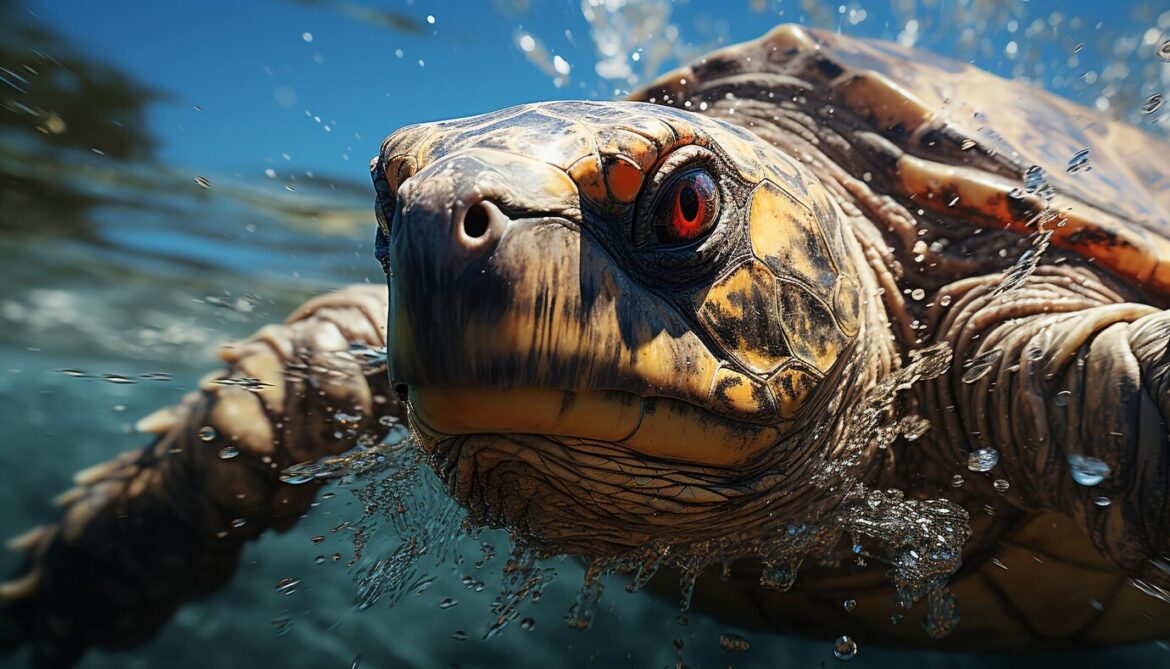Sea turtles are among the most fascinating marine creatures, captivating scientists and nature lovers alike. These ancient reptiles have roamed the oceans for millions of years, growing to impressive sizes. However, the largest sea turtle ever recorded stands as a true marvel of nature. This enormous specimen showcases the sheer scale and resilience of these creatures, highlighting the importance of their conservation.
The Colossal Leatherback Turtle: Nature’s Giant
Among the various sea turtle species, the leatherback turtle (Dermochelys coriacea) holds the record for being the largest sea turtle. Unlike other sea turtles, leatherbacks do not have hard shells but instead possess a tough, leathery skin that allows them to dive deeper and endure colder temperatures. This unique adaptation makes them the most widely distributed sea turtles, found in oceans around the world.
The Largest Sea Turtle Ever Recorded
The title of the largest sea turtle ever recorded belongs to an astonishing leatherback turtle that measured 10 feet (3 meters) in length and weighed over 2,000 pounds (900 kilograms). This massive individual was discovered stranded on the coast of Wales in 1988. Its sheer size left marine biologists in awe, setting a benchmark for turtle enthusiasts and researchers.

This extraordinary turtle emphasized the potential growth these creatures can achieve under optimal conditions. While the average leatherback turtle typically weighs between 550 to 1,500 pounds (250 to 700 kilograms) and measures around 6 to 7 feet (1.8 to 2.1 meters) in length, this record-breaking specimen was truly exceptional.
Leatherback Turtle: A Survivor from the Age of Dinosaurs
Leatherback turtles have existed for more than 100 million years, dating back to the time of the dinosaurs. Their unique physiology, including their flexible shell structure and ability to regulate body temperature, has allowed them to thrive in various marine environments. Unlike other sea turtles that primarily stay in tropical and subtropical waters, leatherbacks can be found as far north as Canada and Norway and as far south as New Zealand and Argentina.
Their diet mainly consists of jellyfish, which they consume in large quantities. With their backward-pointing spines inside their throats, they can efficiently capture and digest their gelatinous prey. This feeding habit plays a crucial role in maintaining the balance of marine ecosystems, preventing jellyfish populations from becoming excessive.
The Largest Sea Turtle: A Conservation Challenge
Despite their impressive size and history, leatherback turtles face numerous threats. The largest sea turtle populations have declined significantly due to human activities, including:
- Habitat Destruction: Coastal development has led to the destruction of nesting sites, making it difficult for females to lay eggs.
- Plastic Pollution: Leatherbacks often mistake plastic bags for jellyfish, leading to ingestion that can cause fatal blockages.
- Climate Change: Rising sea temperatures affect their migratory patterns and nesting success, while ocean acidification disrupts the marine food chain.
- Bycatch: Accidental capture in fishing gear remains a significant threat to leatherbacks, leading to injury or death.
Conservation Efforts for the Largest Sea Turtle Species
To protect the largest sea turtles, global conservation initiatives have been implemented. Organizations worldwide work to ensure their survival through measures such as:
- Protecting Nesting Sites: Governments and environmental groups have established protected areas to safeguard critical nesting beaches.
- Reducing Plastic Waste: Campaigns to minimize ocean plastic pollution help prevent accidental ingestion by sea turtles.
- Sustainable Fishing Practices: Efforts to use turtle-friendly fishing gear and enforce regulations help reduce bycatch.
- Climate Action: Addressing climate change through policy and sustainable practices aids in maintaining healthy ocean ecosystems for these majestic creatures.

The Legacy of the Largest Sea Turtle Ever Recorded
The story of the largest sea turtle ever recorded continues to inspire marine biologists, conservationists, and ocean lovers worldwide. This incredible creature serves as a symbol of resilience and the urgent need for conservation efforts to protect these ancient giants.
While the largest sea turtle ever recorded remains an exceptional case, all leatherback turtles play a vital role in maintaining the health of marine environments. By supporting conservation efforts, reducing plastic waste, and promoting awareness, we can ensure that these gentle giants continue to roam the oceans for generations to come.
Conclusion
The largest sea turtle ever recorded remains an awe-inspiring reminder of nature’s wonders. These ancient mariners have survived for millions of years, adapting to changing environments. However, human impact poses significant threats to their survival. Protecting the largest sea turtle species, particularly the leatherback, is a responsibility we all share. Through continued conservation efforts, we can help these magnificent creatures thrive and ensure their place in the ocean’s future.

